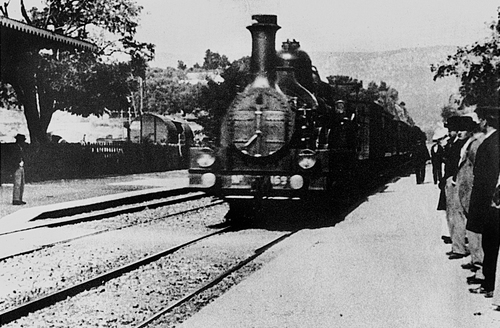
When the French cinema was born
Keeping in mind how advanced and ridiculously high-tech our movie watching experience is nowadays, watching a scene of a moving train will cause no emotion or reaction at all, it would merely keep you in your seat to see if the train will actually explode or something.
However, if you were from the 19th Century and you were just getting used to a brand new phenomenon called “a photograph” when suddenly, you are in a dark room and see an image that is moving, well, that would certainly stir up some emotion.
The Arrival of the Train or 'L’arrivée d’un train en gare de La Ciotat' is an 1895 French short black-and-white silent documentary film directed and produced by Auguste and Louis Lumière.
.jpg)
The first 50-second film
This 50-second silent film shows the entry of a train pulled by a steam locomotive into a train station in the French coastal town of La Ciotat. Like most of the early Lumière films, L’arrivée d’un train en gare de La Ciotat consists of a single, unedited view illustrating an aspect of everyday life. There is no apparent intentional camera movement, and the film consists of one continuous real-time shot.
Contrary to myth, it was not shown at the Lumières’ first public film screening on 28 December 1895 in Paris, France: the program of ten films shown that day makes no mention of it. Its first public showing took place in January 1896.
The film is associated with an urban legend well known in the world of cinema. The story goes that when the film was first shown, the audience was so overwhelmed by the moving image of a life-sized train coming directly at them that people screamed and ran to the back of the room. Hellmuth Karasek in the German magazine Der Spiegel wrote that the film “had a particularly lasting impact; yes, it caused fear, terror, even panic.” However, some have doubted the veracity of this incident such as film scholars and historians.
The Lumiere Brothers
The Lumière brothers clearly knew that the effect would be dramatic if they placed the camera on the platform very close to the arriving train. Another significant aspect of the film is that it illustrates the use of the camera.
Another significant aspect of the film is that it illustrates the use of the long shot to establish the setting of the film, followed by a medium shot, and close-up. The train arrives from a distant point and bears down on the viewer, finally crossing the lower edge of the screen.
What most film histories leave out is that the Lumière Brothers were trying to achieve a 3D image even prior to this first-ever public exhibition of motion pictures. Louis Lumière eventually re-shot L’Arrivée d’un Train with a stereoscopic film camera and exhibited it (along with a series of other 3D shorts) at a 1935 meeting of the French Academy of Science.
Given the contradictory accounts that plague early cinema and pre-cinema accounts, it’s plausible that early cinema historians conflated the audience reactions at these separate screenings of L’Arrivée d’un Train. The intense audience reaction fits better with the latter exhibition when the train apparently was actually coming out of the screen at the audience. But due to the fact that the 3D film never took off commercially as the conventional 2D version did, including such details would not make for a compelling myth.
Watch the movie.
Are you interested in French Films, culture, food and wine? Why not book one of our Slow Tours?
Article credit to Ian Smith of The Vintage News.